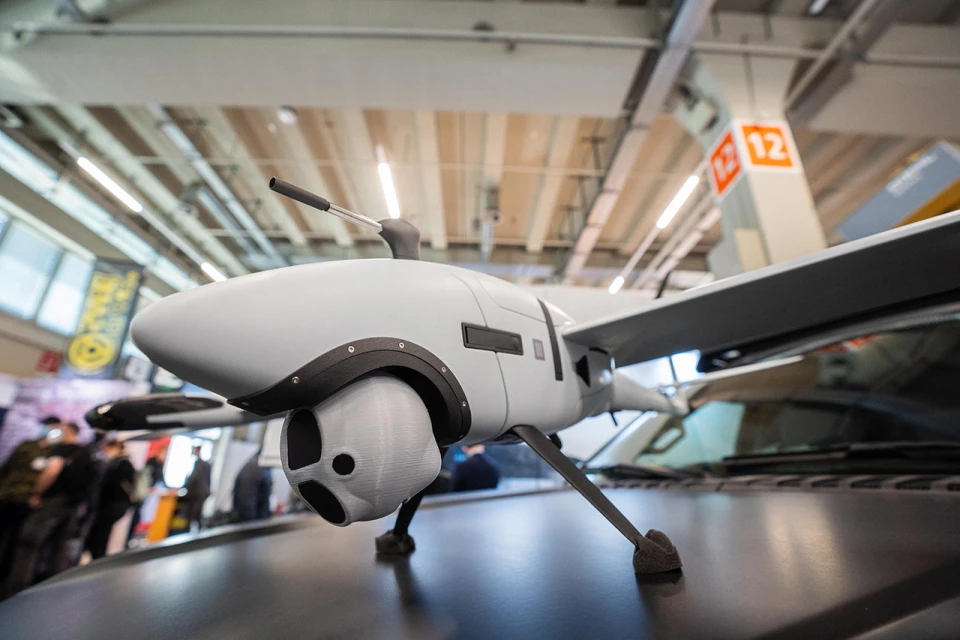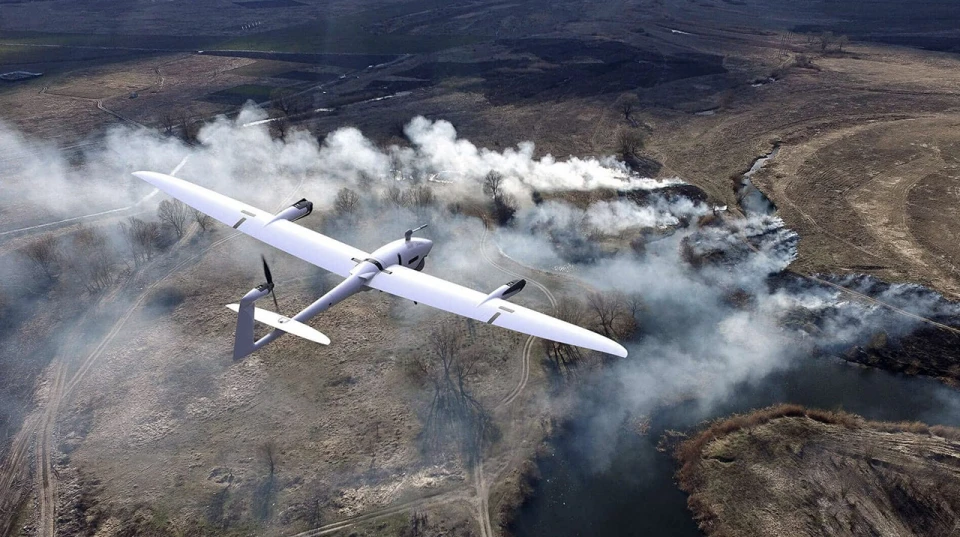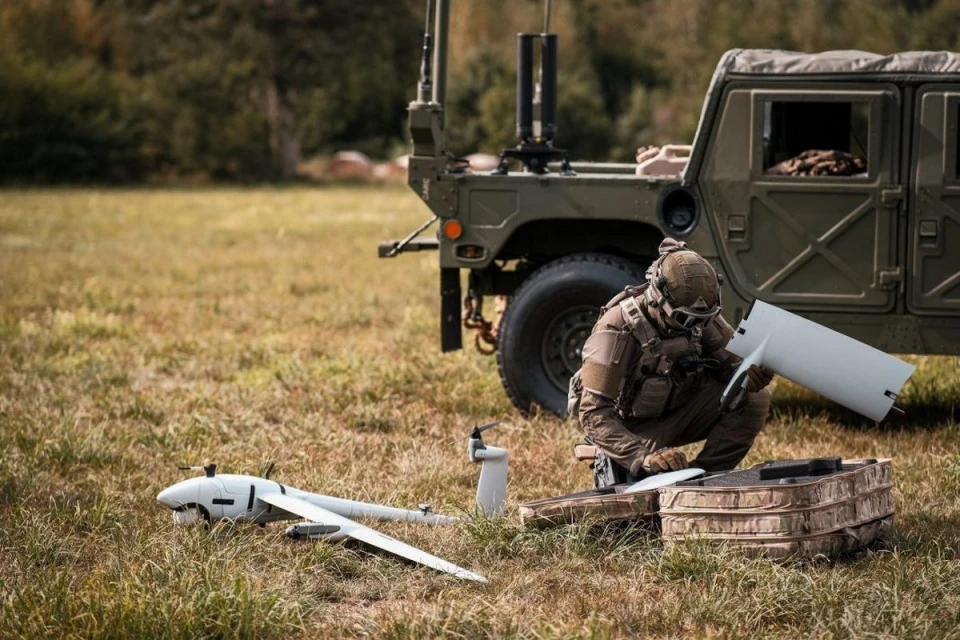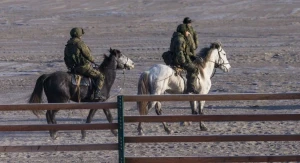
Vector UAVs - German drones for difficult weather conditions, used by Armed Forces of Ukraine and US Special Forces
In late January, German drone manufacturer Quantum-Systems handed over a hundred Trinity mapping drones to Ukraine free of charge. However, Quantum's cooperation with the Ukrainian Defence Forces began much earlier, when the German manufacturer started supplying Ukraine's Armed Forces with Vector UAVs, drones for reconnaissance operations in difficult weather conditions
Espreso explains the features of Vector drones, their advantages, characteristics and how these drones influence the course of events at the front.
The article is about:
- What is a Vector UAV?
- How the Vector UAV works?
- Technical characteristics of Vector drones
- Vector UAVs in Ukraine
- How Vector was improved and who uses it?
What is a Vector UAV?
Work on Vector drones began in 2018, and the UAVs were launched in 2020. Initially, the Vectors were designed for industrial use, but the military soon became interested in the drones and began using them for surveillance and reconnaissance.

Vector is a fixed-wing drone that can both take off and land vertically. Therefore, the UAV does not require a launch catapult or a runway. Despite its considerable size (the Vector's wingspan is 2.8 m), it can be launched by hand, and no net or parachute is required for landing.
"The Vector system comes in an 8.2kg transport bag that can be carried by one person. According to Quantum-Systems, it takes only two minutes to set up the UAV for flight. The ability to operate in the most difficult terrain combined with an extremely low noise level (engine shutdown mode) makes Vector suitable for aerial reconnaissance operations," says Militarnyi portal.
Vector can travel at speeds of up to 72 km/h and in wind speeds of up to 12 m/s. It can stay in the air for up to two hours.

The ground system is integrated into a tablet computer, which allows full control of the aircraft and storage of all data obtained by sensors.
"It is equipped with optical and infrared sensors and can operate around the clock, transmitting information in real time. It is able to identify objects and transmit data to the operator in encrypted form over a range of up to 15 km, and up to 25 km when using an additional station. At the same time, the UAV's developers have built into the Vector the ability to broadcast video to ground stations in real time in combat missions," reads an article about the Vector by ArmyInform.
The drone also has advanced artificial intelligence capabilities for data analysis. The developers claim that the algorithms built into Vector allow it to automatically identify objects and immediately transmit critical intelligence information to the ground.
How the Vector UAV works?

The primary objectives of the Vector include reconnaissance and artillery fire adjustment. The drone's engine is designed to operate with near-silence, minimizing the risk of detection by the enemy. The Vector is called one of the best UAVs of its type.
"The mathematical definition of a vector is very well suited to the UAV of the same name by Quantum-Systems. It can be pointed in any direction: up, forward or down. Vertical take-off, energy-efficient long-range flight on a fixed wing and vertical landing: everything is automatic, no pilot or operator is required," ArmyInform describes.
Vector is also called a 2-in-1 drone. This means that the drone can be transformed into a multi-copter, which expands the range of tasks of the device. The conversion doesn't even require tools, just remove the wings and tail section and install brackets with vertical lift screws. The resulting tricopter drone, called Scorpion, is 1 kilogram lighter than the Vector and can fly for 35 minutes at a maximum speed of 54 km/h.
The drone is powered by electric motors and three rotors mounted on the ends of the wing and tail. In the Vector configuration, the drone has two rigid wings and a tail attached to a fibreglass and Kevlar. Two screws on the wings and one on the tail allow the drone to take off and land, and during flight, they can be turned to increase the lift of the wings. In the Scorpion mode, the wings and tail are replaced by three holders with vertical propellers, allowing the drone to be flown like a regular multicopter.
Technical characteristics of Vector drones
- Wingspan - 2.8 m,
- Maximum take-off weight - 7.4 kg,
- Flight radius - 15 km (with a possible increase to 25 km),
- Flight time - up to 2 hours,
- Cruising speed - up to 25 m/s,
- Payload weight - depends on the modification (10% of the drone's weight),
- Dimensions of the transport case: 0.85 x 0.47 x 0.028 m.
- Price - EUR 180,000-200,000 .
Vector UAV in Ukraine
The initial deployment of Vectors took place in Ukraine during the spring of 2022, driven by the military administration of the Dnipropetrovsk region. Consul Dmytro Shevchenko helped in facilitating connections with the manufacturers.
"The Vector drone with vertical take-off and landing and the HD-40LV optical-location station with laser rangefinder is a state-of-the-art drone that has a big advantage over any Russian drones of this class. It is a worthy competitor for Ukrainian Leleka-100 and Polish Fly Eye-3," wrote Yuriy Butusov, editor-in-chief of Censor.Net at the time.
Later, Kyiv also began to supply Vectors. The first batch of 33 drones proved to be highly effective on the battlefield. The German drones were tested in Ukraine in the Luhansk region, where Vector helped to destroy a Russian crossing point in 2022 near Bilohorivka. The Ukrainian Armed Forces prevented attempts to cross the river and destroyed dozens of weapons and military equipment of the Russian occupying forces.
"Vector was able to adjust its fire through the smoke in the face of electronic warfare," said Matthias Lehna, Business Development Manager at Quantum-Systems.
"Since then, the system has been able to demonstrate unprecedented performance in the most challenging environments. The Vector has been widely used and intensively tested on the Ukrainian battlefield, where it has proven its worth for military intelligence, surveillance and reconnaissance operations. Its rugged design makes it suitable for operation in harsh environments and extreme weather," Quantum-Systems said in a statement in spring 2023. At that time, the Defence Intelligence of Ukraine announced another batch of 105 Vectors funded by the German government.
In addition, in 2023, Quantum Systems entered Ukraine directly. The Germans announced the opening of service training, support, and logistics centres in Ukraine.The centres taught operators how to use and maintain Vector systems. The support centres also specialise in the purchase of spare parts for drones and drone repair. According to Quantum, it takes 4 days to train a Vector UAV operator.
If spare parts for Vector drones are produced in Ukraine in 2024, the company plans to fully assemble these UAVs in the country in 2025.
"To implement these plans, we have rented a space of several thousand square metres for our production, research and development team. We plan to have about 40 specialists working on this project," said representatives of Quantum.
In the summer of 2023, Ukraine ordered the largest batch of Vector reconnaissance drones to date - 300 systems. It is not known exactly how many UAVs have already been delivered to the Ukrainian Defence Forces - this information is classified.
How Vector was improved and who uses it?
The use of drones in Ukraine has also helped to improve these drones. The New York Times wrote that at some point, Vectors "started falling from the sky" on the battlefield. The manufacturer's specialists found out that this was because the Russians jammed the signals that connected the drones to satellites, causing the machines to lose their way and fall to the ground.
As a result, Quantum-Systems created new software based on artificial intelligence. It "supports and provides navigation without the use of GNSS." Vector also added a manual control option. The German company has even built a service centre that will "monitor electronic attacks in Russia", the NYT writes.
The Militarnyi portal also reported that the quality of Vectors was highly appreciated in the United States. The US Department of Defence chose the US subsidiary of German Quantum as a promising manufacturer of reconnaissance UAVs for the US Special Operations Forces.
The US Special Operations Command has allocated $20 million to increase the company's Vector drone production capacity in the United States.
- News













































